
- Speed Of Sound vs Speed Of Light
The speed of sound and the speed of light are two common concepts that most of us likely learn about at some point in life. Both are defined rather simply, with the speed of sound being the speed that sound travels, and the speed of light being the speed at which light travels. Although these two concepts may sound similar, they are in fact radically different from one another. What are some of the differences between them?
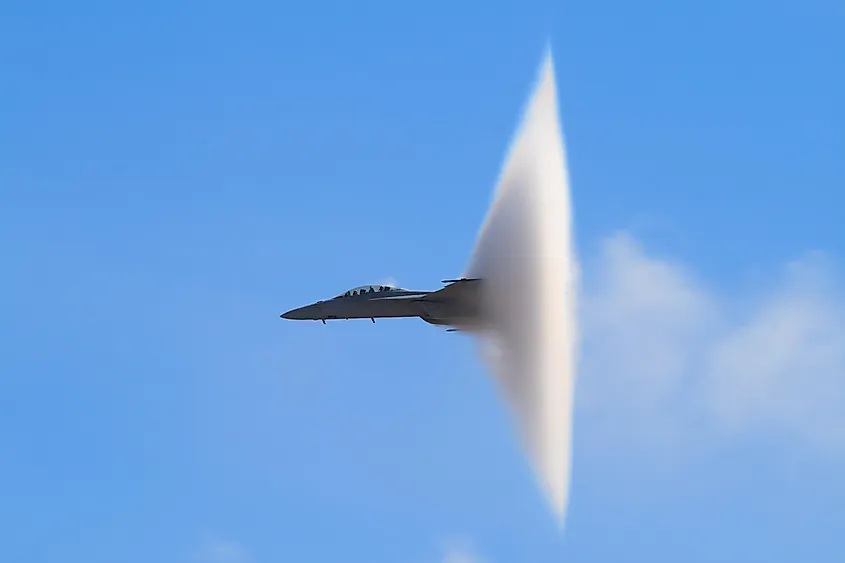
The first notable difference between the speed of sound and light is how fast they are. In Earth’s atmosphere , the speed of sound averages at about 761-miles per hour (1,225-kilometres per hour). That may seem fast, yet when compared to the speed of light, it seems quite small. Light travels at a staggering 670-million miles per hour (1.07-billion kilometres per hour). That’s around 880,000 times faster than the speed of sound.

Sound Must Have A Medium

In order for sound to exist, it must have a medium to travel through. For sound, this medium is air, and that’s why sound does not exist in the emptiness of space. Meanwhile, light does not need a medium to exist. Rather, light travels independently of any medium, and thus it can travel through space, unlike sound.
The Speed Of Light Is Constant

Another notable difference between light and sound is that the speed of light is constant while the speed of sound is not. Since the speed of sound requires air to exist, its speed is dependent upon the density and temperature of air. For example, when we say that sound travels at 761-miles per hour, this is only the case at sea level and when temperatures are around 59-degrees Fahrenheit (15-degrees Celsius). If you are at a higher elevation where the density of air is lower and temperatures are colder, the speed of sound will be different. Thus, the speed of sound varies. Light, however, has no such constraint. Rather, the speed of light is constant regardless of any other factor. No matter the conditions, it always travels at the same speed.
Things That Can Move Faster Than Sound

The speed of sound is fast, yet it is by no means the fastest thing in the universe. It is not even the fastest thing on Earth . Human’s have broken the sound barrier countless times, a speed known as supersonic speed. Light is a different story, however. The speed of light is a fixed law of nature, and it represents the fastest possible speed anything can move at. No matter how hard we try or how advanced technology becomes, the current understanding of the cosmos is that the light barrier cannot be broken. Thus, the speed of light is like a cosmic speed limit.
More in Science
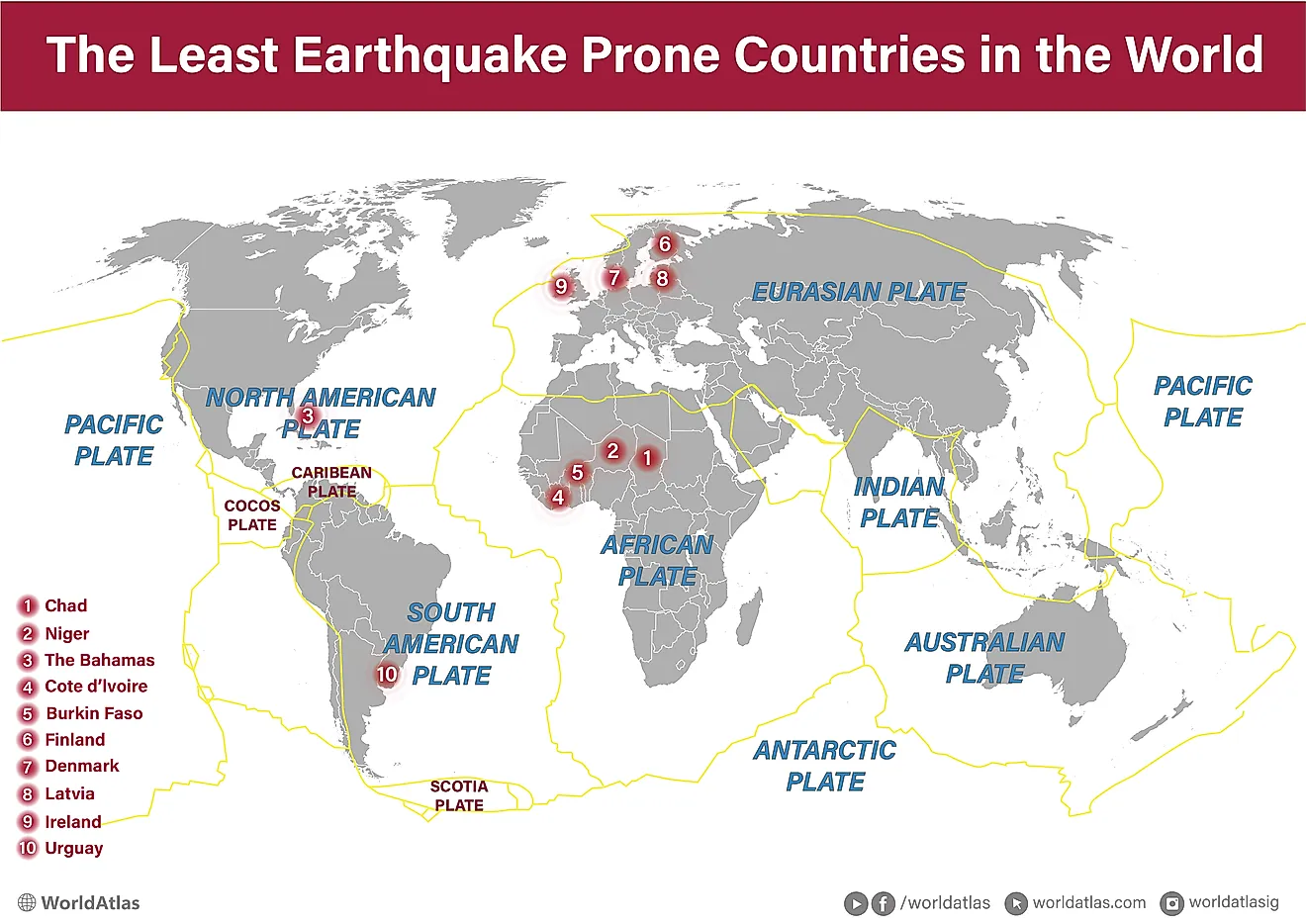
What Countries Have The Least Risk Of Earthquakes?

Where Do Most Earthquakes Occur In The US?
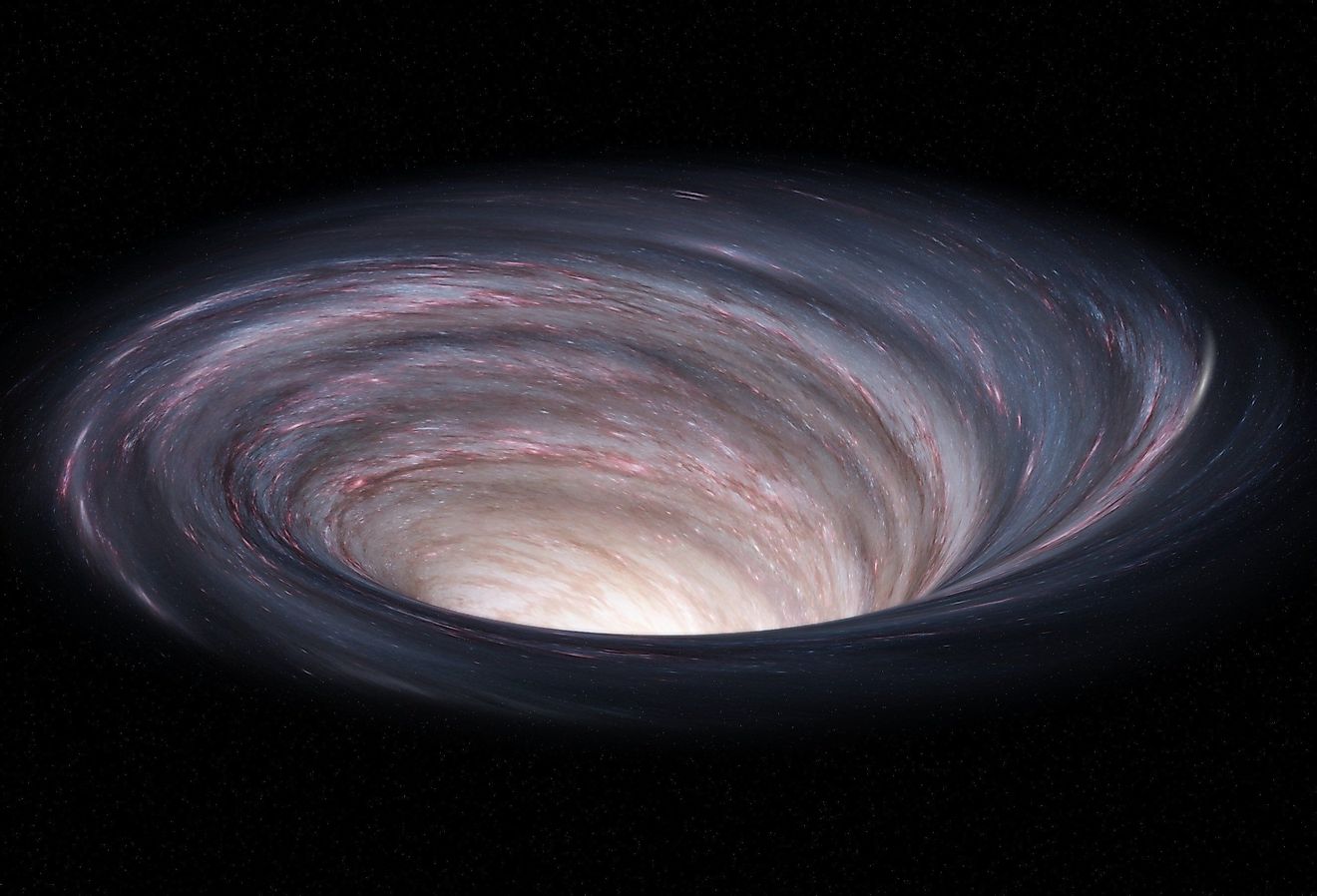
Black Holes Might be Defects in Space and Time

How Are Earthquakes Measured Using The Richter Scale?

How Many New Species Are Discovered Every Year?
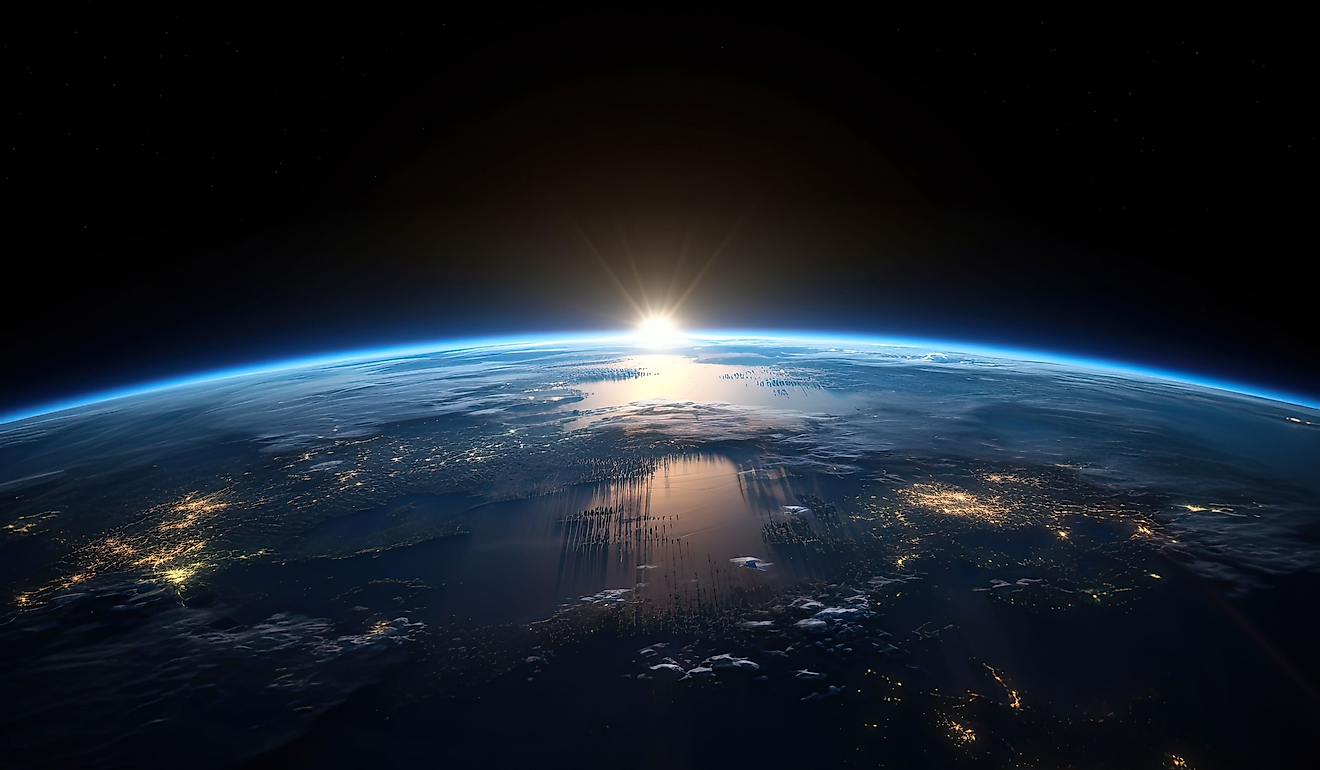
Where Does The Sun Rise And Set?
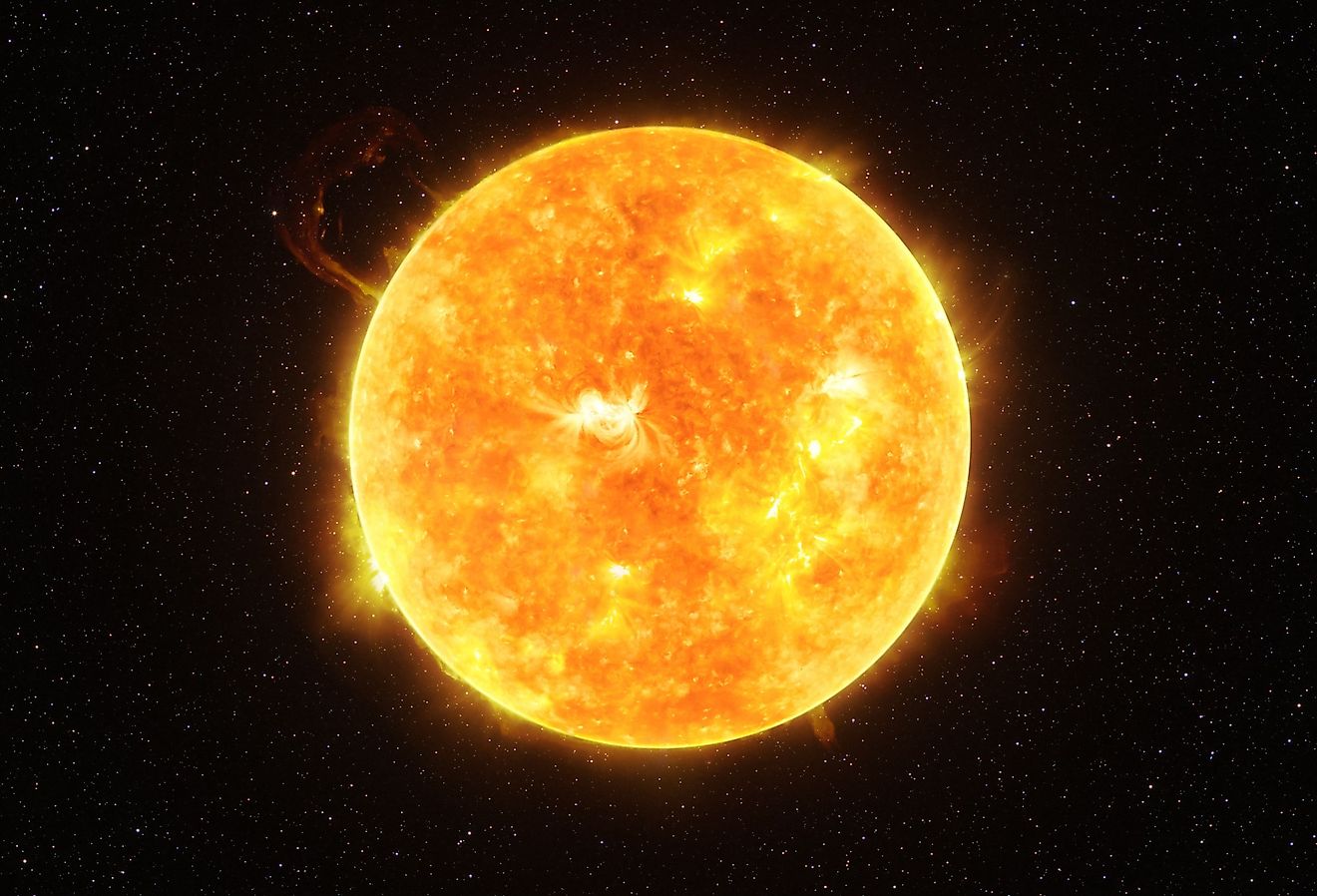
How Hot Is The Sun?
- Subscribe to BBC Science Focus Magazine
- Previous Issues
- Future tech
- Everyday science
- Planet Earth
- Newsletters
Why does light travel faster than sound?
Asked by: Toby Graham, Shrewsbury
Robert Matthews
According to Einstein's Special Relativity, the speed of light has a unique status: it's a fundamental feature of our Universe, representing the maximum speed at which information can travel from place to place. As such, nothing can match the 300,000km/s achieved by light travelling through a vacuum – least of all sound, which being waves of compression and expansion in a substance doesn’t even exist in a vacuum.
That said, light can be slowed down by being passed through transparent materials – by around 33 per cent in the case of glass. Even so, it still zooms through glass around 50,000 times faster than sound waves.
- Does the speed of light ever change?
- What would you see if you could travel at the speed of light?
- How fast does sound travel through water?
- Does sound travel further on foggy days?
Share this article

- Terms & Conditions
- Privacy policy
- Cookies policy
- Code of conduct
- Magazine subscriptions
- Manage preferences
- Follow us on Facebook
- Follow us on Twitter
- Follow us on LinkedIn
- Watch us on Youtube
- Latest Explore all the latest news and information on Physics World
- Research updates Keep track of the most exciting research breakthroughs and technology innovations
- News Stay informed about the latest developments that affect scientists in all parts of the world
- Features Take a deeper look at the emerging trends and key issues within the global scientific community
- Opinion and reviews Find out whether you agree with our expert commentators
- Interviews Discover the views of leading figures in the scientific community
- Analysis Discover the stories behind the headlines
- Blog Enjoy a more personal take on the key events in and around science
- Physics World Live
- Impact Explore the value of scientific research for industry, the economy and society
- Events Plan the meetings and conferences you want to attend with our comprehensive events calendar
- Innovation showcases A round-up of the latest innovation from our corporate partners
- Collections Explore special collections that bring together our best content on trending topics
- Artificial intelligence Explore the ways in which today’s world relies on AI, and ponder how this technology might shape the world of tomorrow
- #BlackInPhysics Celebrating Black physicists and revealing a more complete picture of what a physicist looks like
- Nanotechnology in action The challenges and opportunities of turning advances in nanotechnology into commercial products
- The Nobel Prize for Physics Explore the work of recent Nobel laureates, find out what happens behind the scenes, and discover some who were overlooked for the prize
- Revolutions in computing Find out how scientists are exploiting digital technologies to understand online behaviour and drive research progress
- The science and business of space Explore the latest trends and opportunities associated with designing, building, launching and exploiting space-based technologies
- Supercool physics Experiments that probe the exotic behaviour of matter at ultralow temperatures depend on the latest cryogenics technology
- Women in physics Celebrating women in physics and their contributions to the field
- Audio and video Explore the sights and sounds of the scientific world
- Podcasts Our regular conversations with inspiring figures from the scientific community
- Video Watch our specially filmed videos to get a different slant on the latest science
- Webinars Tune into online presentations that allow expert speakers to explain novel tools and applications
- IOP Publishing
- Enter e-mail address
- Show Enter password
- Remember me Forgot your password?
- Access more than 20 years of online content
- Manage which e-mail newsletters you want to receive
- Read about the big breakthroughs and innovations across 13 scientific topics
- Explore the key issues and trends within the global scientific community
- Choose which e-mail newsletters you want to receive
Reset your password
Please enter the e-mail address you used to register to reset your password
Registration complete
Thank you for registering with Physics World If you'd like to change your details at any time, please visit My account
- Transport properties
- Research update
Sound breaks the light barrier
Nothing can travel faster than light… except for sound. This is the claim of some US physicists, who say they have designed an unusual waveguide to make sound move at “superluminal” speeds ( Appl. Phys. Lett. 90 014102).
Sound often comprises numerous superimposed waves of various wavelengths. At certain points, these constituent waves can all combine constructively to produce a pulse, which moves through the medium at a velocity known as the “group velocity”.
In a normal dispersive medium, the velocity of a wave is proportional to its wavelength, resulting in a group velocity that is slower than the average velocity of its constituent waves. But in an “anomalously” dispersive medium — one that becomes highly absorbing or attenuating at certain frequencies — velocity is inversely proportional to wavelength, meaning that the group velocity can become much faster.
Indeed, the group velocity of light has already been shown to travel faster than the speed of light in a vacuum. But until now, superluminal acoustic waves have existed only in theory, and would require the group velocity to increase almost a million times over.
William Robertson and colleagues from Middle Tennessee State University in the US have managed to produce “faster than light” sound, however, by putting a sound pulse through a surprisingly simple waveguide. Inside, a loop filter splits the signal along two unequal length paths, and then recombines it to produce large amounts of anomalous dispersion. As they interfere with each other, they replicate the shape of the original pulse, only farther ahead. This gives the impression that the sound has travelled farther, and thus faster, in the same space of time.
Robertson says that such split-path interference can also occur naturally when a sound source is located near a hard wall: some of the sound reaches the listener directly, and some reaches the listener from a slightly longer path as it bounces off the wall. Therefore, he says, superluminal sound is an “everyday” occurrence, although it is mostly too subtle to notice.
Proponents of Einstein’s special relativity need not worry, though. The underlying waves that make up the pulse remain at subluminal velocities, so no information, matter or energy actually travels faster than light. (See related link: “Subluminal”.)
“The effect is the same as that observed in previous electrical or optical experiments,” Robertson told Physics Web . “The only somewhat startling difference is that the acoustic waves making up the pulse move so much more slowly than light.”
Want to read more?
- E-mail Address
Jon Cartwright is a reporter for Physics Web

Download your publishing guide
A step-by-step guide unlocking your research’s scientific impact
Climate-change breaks records in Prague, not Philadelphia
Giant-magnetoresistance pioneers win wolf prize, discover more from physics world.

Sound and vision: synchrotron insights illuminate crystal nucleation and growth

- Superconductivity
‘Room-temperature superconductor’ LK-99 fails replication tests

- Instrumentation and measurement
Grounds for celebration as ‘hub of all things coffee’ opens at University of California, Davis
Related jobs, technicians & engineers, electronics design engineer (quantum applications), postdoctoral researcher in wide and ultrawide bandgap semiconductor power devices processing, rewire, related events.
- Materials | Symposium The Eigthth International Symposium on Dielectric Materials and Applications (ISyDMA'8) 12—16 May 2024 | Orlando, US
- Materials | Symposium Eighth International Symposium on Dielectric Materials and Applications (ISyDMA'8) 12—16 May 2024 | Orlando, US
- Biophysics and bioengineering | Workshop Chemotaxis – from Basic Physics to Biology 13—17 May 2024 | Dresden, Germany
- Random article
- Teaching guide
- Privacy & cookies
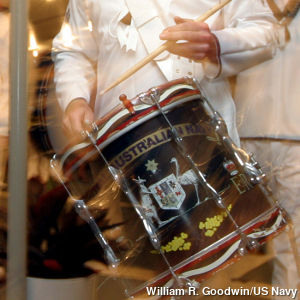
by Chris Woodford . Last updated: July 23, 2023.
Photo: Sound is energy we hear made by things that vibrate. Photo by William R. Goodwin courtesy of US Navy and Wikimedia Commons .
What is sound?
Photo: Sensing with sound: Light doesn't travel well through ocean water: over half the light falling on the sea surface is absorbed within the first meter of water; 100m down and only 1 percent of the surface light remains. That's largely why mighty creatures of the deep rely on sound for communication and navigation. Whales, famously, "talk" to one another across entire ocean basins, while dolphins use sound, like bats, for echolocation. Photo by Bill Thompson courtesy of US Fish and Wildlife Service .
Robert Boyle's classic experiment
Artwork: Robert Boyle's famous experiment with an alarm clock.
How sound travels
Artwork: Sound waves and ocean waves compared. Top: Sound waves are longitudinal waves: the air moves back and forth along the same line as the wave travels, making alternate patterns of compressions and rarefactions. Bottom: Ocean waves are transverse waves: the water moves back and forth at right angles to the line in which the wave travels.
The science of sound waves
Picture: Reflected sound is extremely useful for "seeing" underwater where light doesn't really travel—that's the basic idea behind sonar. Here's a side-scan sonar (reflected sound) image of a World War II boat wrecked on the seabed. Photo courtesy of U.S. National Oceanographic and Atmospheric Administration, US Navy, and Wikimedia Commons .
Whispering galleries and amphitheaters
Photos by Carol M. Highsmith: 1) The Capitol in Washington, DC has a whispering gallery inside its dome. Photo credit: The George F. Landegger Collection of District of Columbia Photographs in Carol M. Highsmith's America, Library of Congress , Prints and Photographs Division. 2) It's easy to hear people talking in the curved memorial amphitheater building at Arlington National Cemetery, Arlington, Virginia. Photo credit: Photographs in the Carol M. Highsmith Archive, Library of Congress , Prints and Photographs Division.
Measuring waves
Understanding amplitude and frequency, why instruments sound different, the speed of sound.
Photo: Breaking through the sound barrier creates a sonic boom. The mist you can see, which is called a condensation cloud, isn't necessarily caused by an aircraft flying supersonic: it can occur at lower speeds too. It happens because moist air condenses due to the shock waves created by the plane. You might expect the plane to compress the air as it slices through. But the shock waves it generates alternately expand and contract the air, producing both compressions and rarefactions. The rarefactions cause very low pressure and it's these that make moisture in the air condense, producing the cloud you see here. Photo by John Gay courtesy of US Navy and Wikimedia Commons .
Why does sound go faster in some things than in others?
Chart: Generally, sound travels faster in solids (right) than in liquids (middle) or gases (left)... but there are exceptions!
How to measure the speed of sound
Sound in practice, if you liked this article..., find out more, on this website.
- Electric guitars
- Speech synthesis
- Synthesizers
On other sites
- Explore Sound : A comprehensive educational site from the Acoustical Society of America, with activities for students of all ages.
- Sound Waves : A great collection of interactive science lessons from the University of Salford, which explains what sound waves are and the different ways in which they behave.
Educational books for younger readers
- Sound (Science in a Flash) by Georgia Amson-Bradshaw. Franklin Watts/Hachette, 2020. Simple facts, experiments, and quizzes fill this book; the visually exciting design will appeal to reluctant readers. Also for ages 7–9.
- Sound by Angela Royston. Raintree, 2017. A basic introduction to sound and musical sounds, including simple activities. Ages 7–9.
- Experimenting with Sound Science Projects by Robert Gardner. Enslow Publishers, 2013. A comprehensive 120-page introduction, running through the science of sound in some detail, with plenty of hands-on projects and activities (including welcome coverage of how to run controlled experiments using the scientific method). Ages 9–12.
- Cool Science: Experiments with Sound and Hearing by Chris Woodford. Gareth Stevens Inc, 2010. One of my own books, this is a short introduction to sound through practical activities, for ages 9–12.
- Adventures in Sound with Max Axiom, Super Scientist by Emily Sohn. Capstone, 2007. The original, graphic novel (comic book) format should appeal to reluctant readers. Ages 8–10.
Popular science
- The Sound Book: The Science of the Sonic Wonders of the World by Trevor Cox. W. W. Norton, 2014. An entertaining tour through everyday sound science.
Academic books
- Master Handbook of Acoustics by F. Alton Everest and Ken Pohlmann. McGraw-Hill Education, 2015. A comprehensive reference for undergraduates and sound-design professionals.
- The Science of Sound by Thomas D. Rossing, Paul A. Wheeler, and F. Richard Moore. Pearson, 2013. One of the most popular general undergraduate texts.
Text copyright © Chris Woodford 2009, 2021. All rights reserved. Full copyright notice and terms of use .
Rate this page
Tell your friends, cite this page, more to explore on our website....
- Get the book
- Send feedback

- school Campus Bookshelves
- menu_book Bookshelves
- perm_media Learning Objects
- login Login
- how_to_reg Request Instructor Account
- hub Instructor Commons
- Download Page (PDF)
- Download Full Book (PDF)
- Periodic Table
- Physics Constants
- Scientific Calculator
- Reference & Cite
- Tools expand_more
- Readability
selected template will load here
This action is not available.

17.3: Speed of Sound
- Last updated
- Save as PDF
- Page ID 4077

\( \newcommand{\vecs}[1]{\overset { \scriptstyle \rightharpoonup} {\mathbf{#1}} } \)
\( \newcommand{\vecd}[1]{\overset{-\!-\!\rightharpoonup}{\vphantom{a}\smash {#1}}} \)
\( \newcommand{\id}{\mathrm{id}}\) \( \newcommand{\Span}{\mathrm{span}}\)
( \newcommand{\kernel}{\mathrm{null}\,}\) \( \newcommand{\range}{\mathrm{range}\,}\)
\( \newcommand{\RealPart}{\mathrm{Re}}\) \( \newcommand{\ImaginaryPart}{\mathrm{Im}}\)
\( \newcommand{\Argument}{\mathrm{Arg}}\) \( \newcommand{\norm}[1]{\| #1 \|}\)
\( \newcommand{\inner}[2]{\langle #1, #2 \rangle}\)
\( \newcommand{\Span}{\mathrm{span}}\)
\( \newcommand{\id}{\mathrm{id}}\)
\( \newcommand{\kernel}{\mathrm{null}\,}\)
\( \newcommand{\range}{\mathrm{range}\,}\)
\( \newcommand{\RealPart}{\mathrm{Re}}\)
\( \newcommand{\ImaginaryPart}{\mathrm{Im}}\)
\( \newcommand{\Argument}{\mathrm{Arg}}\)
\( \newcommand{\norm}[1]{\| #1 \|}\)
\( \newcommand{\Span}{\mathrm{span}}\) \( \newcommand{\AA}{\unicode[.8,0]{x212B}}\)
\( \newcommand{\vectorA}[1]{\vec{#1}} % arrow\)
\( \newcommand{\vectorAt}[1]{\vec{\text{#1}}} % arrow\)
\( \newcommand{\vectorB}[1]{\overset { \scriptstyle \rightharpoonup} {\mathbf{#1}} } \)
\( \newcommand{\vectorC}[1]{\textbf{#1}} \)
\( \newcommand{\vectorD}[1]{\overrightarrow{#1}} \)
\( \newcommand{\vectorDt}[1]{\overrightarrow{\text{#1}}} \)
\( \newcommand{\vectE}[1]{\overset{-\!-\!\rightharpoonup}{\vphantom{a}\smash{\mathbf {#1}}}} \)
Learning Objectives
- Explain the relationship between wavelength and frequency of sound
- Determine the speed of sound in different media
- Derive the equation for the speed of sound in air
- Determine the speed of sound in air for a given temperature
Sound, like all waves, travels at a certain speed and has the properties of frequency and wavelength. You can observe direct evidence of the speed of sound while watching a fireworks display (Figure \(\PageIndex{1}\)). You see the flash of an explosion well before you hear its sound and possibly feel the pressure wave, implying both that sound travels at a finite speed and that it is much slower than light.

The difference between the speed of light and the speed of sound can also be experienced during an electrical storm. The flash of lighting is often seen before the clap of thunder. You may have heard that if you count the number of seconds between the flash and the sound, you can estimate the distance to the source. Every five seconds converts to about one mile. The velocity of any wave is related to its frequency and wavelength by
\[v = f \lambda, \label{17.3}\]
where \(v\) is the speed of the wave, \(f\) is its frequency, and \(\lambda\) is its wavelength. Recall from Waves that the wavelength is the length of the wave as measured between sequential identical points. For example, for a surface water wave or sinusoidal wave on a string, the wavelength can be measured between any two convenient sequential points with the same height and slope, such as between two sequential crests or two sequential troughs. Similarly, the wavelength of a sound wave is the distance between sequential identical parts of a wave—for example, between sequential compressions (Figure \(\PageIndex{2}\)). The frequency is the same as that of the source and is the number of waves that pass a point per unit time.
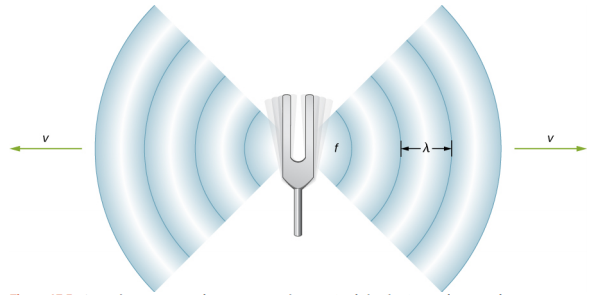
Speed of Sound in Various Media
Table \(\PageIndex{1}\) shows that the speed of sound varies greatly in different media. The speed of sound in a medium depends on how quickly vibrational energy can be transferred through the medium. For this reason, the derivation of the speed of sound in a medium depends on the medium and on the state of the medium. In general, the equation for the speed of a mechanical wave in a medium depends on the square root of the restoring force, or the elastic property, divided by the inertial property,
\[v = \sqrt{\frac{\text{elastic property}}{\text{inertial property}}} \ldotp\]
Also, sound waves satisfy the wave equation derived in Waves ,
\[\frac{\partial^{2} y (x,t)}{\partial x^{2}} = \frac{1}{v^{2}} \frac{\partial^{2} y (x,t)}{\partial t^{2}} \ldotp\]
Recall from Waves that the speed of a wave on a string is equal to \(v = \sqrt{\frac{F_{T}}{\mu}}\), where the restoring force is the tension in the string F T and the linear density \(\mu\) is the inertial property. In a fluid, the speed of sound depends on the bulk modulus and the density,
\[v = \sqrt{\frac{B}{\rho}} \ldotp \label{17.4}\]
The speed of sound in a solid the depends on the Young’s modulus of the medium and the density,
\[v = \sqrt{\frac{Y}{\rho}} \ldotp \label{17.5}\]
In an ideal gas (see The Kinetic Theory of Gases ), the equation for the speed of sound is
\[v = \sqrt{\frac{\gamma RT_{K}}{M}}, \label{17.6}\]
where \(\gamma\) is the adiabatic index, R = 8.31 J/mol • K is the gas constant, T K is the absolute temperature in kelvins, and M is the molecular mass. In general, the more rigid (or less compressible) the medium, the faster the speed of sound. This observation is analogous to the fact that the frequency of simple harmonic motion is directly proportional to the stiffness of the oscillating object as measured by k, the spring constant. The greater the density of a medium, the slower the speed of sound. This observation is analogous to the fact that the frequency of a simple harmonic motion is inversely proportional to m, the mass of the oscillating object. The speed of sound in air is low, because air is easily compressible. Because liquids and solids are relatively rigid and very difficult to compress, the speed of sound in such media is generally greater than in gases.
Because the speed of sound depends on the density of the material, and the density depends on the temperature, there is a relationship between the temperature in a given medium and the speed of sound in the medium. For air at sea level, the speed of sound is given by
\[v = 331\; m/s \sqrt{1 + \frac{T_{C}}{273 °C}} = 331\; m/s \sqrt{\frac{T_{K}}{273\; K}} \label{17.7}\]
where the temperature in the first equation (denoted as T C ) is in degrees Celsius and the temperature in the second equation (denoted as T K ) is in kelvins. The speed of sound in gases is related to the average speed of particles in the gas,
\[v_{rms} = \sqrt{\frac{3k_{B}T}{m}}.\]
where \(k_B\) is the Boltzmann constant (1.38 x 10 −23 J/K) and m is the mass of each (identical) particle in the gas. Note that v refers to the speed of the coherent propagation of a disturbance (the wave), whereas \(v_{rms}\) describes the speeds of particles in random directions. Thus, it is reasonable that the speed of sound in air and other gases should depend on the square root of temperature. While not negligible, this is not a strong dependence. At 0°C , the speed of sound is 331 m/s, whereas at 20.0 °C, it is 343 m/s, less than a 4% increase. Figure \(\PageIndex{3}\) shows how a bat uses the speed of sound to sense distances.
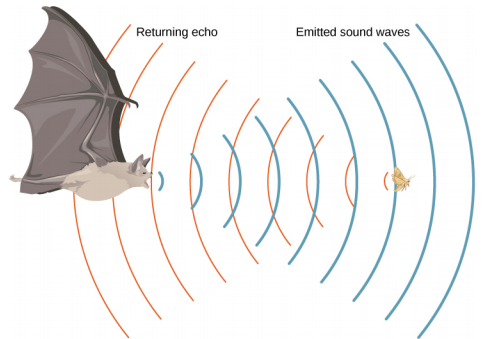
Derivation of the Speed of Sound in Air
As stated earlier, the speed of sound in a medium depends on the medium and the state of the medium. The derivation of the equation for the speed of sound in air starts with the mass flow rate and continuity equation discussed in Fluid Mechanics . Consider fluid flow through a pipe with cross-sectional area \(A\) (Figure \(\PageIndex{4}\)). The mass in a small volume of length \(x\) of the pipe is equal to the density times the volume, or
\[m = \rho V = \rho Ax.\]
The mass flow rate is
\[\frac{dm}{dt} = \frac{d}{dt} (\rho V) = \frac{d}{dt} (\rho Ax) = \rho A \frac{dx}{dt} = \rho Av \ldotp\]
The continuity equation from Fluid Mechanics states that the mass flow rate into a volume has to equal the mass flow rate out of the volume,
\[\rho_{in} A_{in}v_{in} = \rho_{out} A_{out}v_{out}.\]
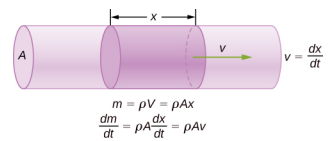
Now consider a sound wave moving through a parcel of air. A parcel of air is a small volume of air with imaginary boundaries (Figure \(\PageIndex{5}\)). The density, temperature, and velocity on one side of the volume of the fluid are given as \(\rho\), T, v, and on the other side are \(\rho\) + d\(\rho\), \(T + dT\), \(v + dv\).
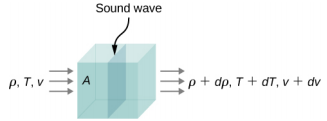
The continuity equation states that the mass flow rate entering the volume is equal to the mass flow rate leaving the volume, so
\[\rho Av = (\rho + d \rho)A(v + dv) \ldotp\]
This equation can be simplified, noting that the area cancels and considering that the multiplication of two infinitesimals is approximately equal to zero: d\(\rho\)(dv) ≈ 0,
\[\begin{split} \rho v & = (\rho + d \rho)(v + dv) \\ & = \rho v + \rho (dv) + (d \rho)v + (d \rho)(dv) \\ 0 & = \rho (dv) + (d \rho) v \\ \rho\; dv & = -v\; d \rho \ldotp \end{split}\]
The net force on the volume of fluid (Figure \(\PageIndex{6}\)) equals the sum of the forces on the left face and the right face:
\[\begin{split} F_{net} & = p\; dy\; dz - (p + dp)\; dy\; dz \ & = p\; dy\; dz\; - p\; dy\; dz - dp\; dy\; dz \\ & = -dp\; dy\; dz \\ ma & = -dp\; dy\; dz \ldotp \end{split}\]
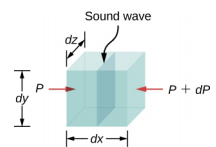
Figure \(\PageIndex{6}\):
The acceleration is the force divided by the mass and the mass is equal to the density times the volume, m = \(\rho\)V = \(\rho\) dx dy dz. We have
\[\begin{split} ma & = -dp\; dy\; dz \\ a & = - \frac{dp\; dy\; dz}{m} = - \frac{dp\; dy\; dz}{\rho\; dx\; dy\; dz} = - \frac{dp}{\rho\; dx} \\ \frac{dv}{dt} & = - \frac{dp}{\rho\; dx} \\ dv & = - \frac{dp}{\rho dx} dt = - \frac{dp}{\rho} \frac{1}{v} \\ \rho v\; dv & = -dp \ldotp \end{split}\]
From the continuity equation \(\rho\) dv = −vd\(\rho\), we obtain
\[\begin{split} \rho v\; dv & = -dp \\ (-v\; d \rho)v & = -dp \\ v & = \sqrt{\frac{dp}{d \rho}} \ldotp \end{split}\]
Consider a sound wave moving through air. During the process of compression and expansion of the gas, no heat is added or removed from the system. A process where heat is not added or removed from the system is known as an adiabatic system. Adiabatic processes are covered in detail in The First Law of Thermodynamics , but for now it is sufficient to say that for an adiabatic process, \(pV^{\gamma} = \text{constant}\), where \(p\) is the pressure, \(V\) is the volume, and gamma (\(\gamma\)) is a constant that depends on the gas. For air, \(\gamma\) = 1.40. The density equals the number of moles times the molar mass divided by the volume, so the volume is equal to V = \(\frac{nM}{\rho}\). The number of moles and the molar mass are constant and can be absorbed into the constant p \(\left(\dfrac{1}{\rho}\right)^{\gamma}\) = constant. Taking the natural logarithm of both sides yields ln p − \(\gamma\) ln \(\rho\) = constant. Differentiating with respect to the density, the equation becomes
\[\begin{split} \ln p - \gamma \ln \rho & = constant \\ \frac{d}{d \rho} (\ln p - \gamma \ln \rho) & = \frac{d}{d \rho} (constant) \\ \frac{1}{p} \frac{dp}{d \rho} - \frac{\gamma}{\rho} & = 0 \\ \frac{dp}{d \rho} & = \frac{\gamma p}{\rho} \ldotp \end{split}\]
If the air can be considered an ideal gas, we can use the ideal gas law:
\[\begin{split} pV & = nRT = \frac{m}{M} RT \\ p & = \frac{m}{V} \frac{RT}{M} = \rho \frac{RT}{M} \ldotp \end{split}\]
Here M is the molar mass of air:
\[\frac{dp}{d \rho} = \frac{\gamma p}{\rho} = \frac{\gamma \left(\rho \frac{RT}{M}\right)}{\rho} = \frac{\gamma RT}{M} \ldotp\]
Since the speed of sound is equal to v = \(\sqrt{\frac{dp}{d \rho}}\), the speed is equal to
\[v = \sqrt{\frac{\gamma RT}{M}} \ldotp\]
Note that the velocity is faster at higher temperatures and slower for heavier gases. For air, \(\gamma\) = 1.4, M = 0.02897 kg/mol, and R = 8.31 J/mol • K. If the temperature is T C = 20 °C (T = 293 K), the speed of sound is v = 343 m/s. The equation for the speed of sound in air v = \(\sqrt{\frac{\gamma RT}{M}}\) can be simplified to give the equation for the speed of sound in air as a function of absolute temperature:
\[\begin{split} v & = \sqrt{\frac{\gamma RT}{M}} \\ & = \sqrt{\frac{\gamma RT}{M} \left(\dfrac{273\; K}{273\; K}\right)} = \sqrt{\frac{(273\; K) \gamma R}{M}} \sqrt{\frac{T}{273\; K}} \\ & \approx 331\; m/s \sqrt{\frac{T}{273\; K}} \ldotp \end{split}\]
One of the more important properties of sound is that its speed is nearly independent of the frequency. This independence is certainly true in open air for sounds in the audible range. If this independence were not true, you would certainly notice it for music played by a marching band in a football stadium, for example. Suppose that high-frequency sounds traveled faster—then the farther you were from the band, the more the sound from the low-pitch instruments would lag that from the high-pitch ones. But the music from all instruments arrives in cadence independent of distance, so all frequencies must travel at nearly the same speed. Recall that
\[v = f \lambda \ldotp\]
In a given medium under fixed conditions, \(v\) is constant, so there is a relationship between \(f\) and \(\lambda\); the higher the frequency, the smaller the wavelength (Figure \(\PageIndex{7}\)).
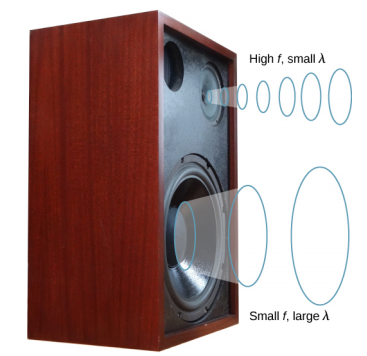
Example \(\PageIndex{1}\): Calculating Wavelengths
Calculate the wavelengths of sounds at the extremes of the audible range, 20 and 20,000 Hz, in 30.0 °C air. (Assume that the frequency values are accurate to two significant figures.)
To find wavelength from frequency, we can use \(v = f \lambda\).
- Identify knowns. The value for \(v\) is given by \[v = 331\; m/s \sqrt{\frac{T}{273\; K}} \ldotp \nonumber\]
- Convert the temperature into kelvins and then enter the temperature into the equation \[v = 331\; m/s \sqrt{\frac{303\; K}{273\; K}} = 348.7\; m/s \ldotp \nonumber\]
- Solve the relationship between speed and wavelength for \(\lambda\): $$\lambda = \frac{v}{f} \ldotp \nonumber$$
- Enter the speed and the minimum frequency to give the maximum wavelength: \[\lambda_{max} = \frac{348.7\; m/s}{20\; Hz} = 17\; m \ldotp \nonumber\]
- Enter the speed and the maximum frequency to give the minimum wavelength: \[\lambda_{min} = \frac{348.7\; m/s}{20,000\; Hz} = 0.017\; m = 1.7\; cm \ldotp \nonumber\]
Significance
Because the product of \(f\) multiplied by \(\lambda\) equals a constant, the smaller \(f\) is, the larger \(\lambda\) must be, and vice versa.
The speed of sound can change when sound travels from one medium to another, but the frequency usually remains the same. This is similar to the frequency of a wave on a string being equal to the frequency of the force oscillating the string. If \(v\) changes and \(f\) remains the same, then the wavelength \(\lambda\) must change. That is, because \(v = f \lambda\), the higher the speed of a sound, the greater its wavelength for a given frequency.
Exercise \(\PageIndex{1}\)
Imagine you observe two firework shells explode. You hear the explosion of one as soon as you see it. However, you see the other shell for several milliseconds before you hear the explosion. Explain why this is so.
Although sound waves in a fluid are longitudinal, sound waves in a solid travel both as longitudinal waves and transverse waves. Seismic waves, which are essentially sound waves in Earth’s crust produced by earthquakes, are an interesting example of how the speed of sound depends on the rigidity of the medium. Earthquakes produce both longitudinal and transverse waves, and these travel at different speeds. The bulk modulus of granite is greater than its shear modulus. For that reason, the speed of longitudinal or pressure waves (P-waves) in earthquakes in granite is significantly higher than the speed of transverse or shear waves (S-waves). Both types of earthquake waves travel slower in less rigid material, such as sediments. P-waves have speeds of 4 to 7 km/s, and S-waves range in speed from 2 to 5 km/s, both being faster in more rigid material. The P-wave gets progressively farther ahead of the S-wave as they travel through Earth’s crust. The time between the P- and S-waves is routinely used to determine the distance to their source, the epicenter of the earthquake. Because S-waves do not pass through the liquid core, two shadow regions are produced (Figure \(\PageIndex{8}\)).
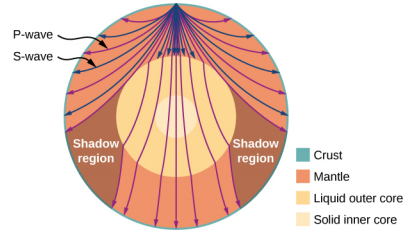
As sound waves move away from a speaker, or away from the epicenter of an earthquake, their power per unit area decreases. This is why the sound is very loud near a speaker and becomes less loud as you move away from the speaker. This also explains why there can be an extreme amount of damage at the epicenter of an earthquake but only tremors are felt in areas far from the epicenter. The power per unit area is known as the intensity, and in the next section, we will discuss how the intensity depends on the distance from the source.
Speed of Sound and Light
Most recent answer: 2/14/2017
(published on 10/22/2007)
Follow-Up #1: light/sound time lag
Follow-up #2: light and sound.
(published on 05/16/2013)
Follow-Up #3: The difference in time taken
The time taken to reach a particular distance (in most general sense) depends on how fast someone is moving. The speed of light is much faster than the speed of sound in air. If you want to compare, the speed of sound in air is ~ 343 m/s and the speed of light is 3x10 10 m/s. In other words, light travels 186 thousand miles in 1 second, while sound takes almost 5 seconds to travel 1 mile.
(published on 02/14/2017)
Follow-up on this answer

Related Questions
- How to calculate velocity when you are not given the tim
- Is the speed of sound dependent on frequency?
- Can you transmit information faster than light with solid rods?
- Total Internal Reflection of Light and Sound
- Doppler shift formulas
- Waves in shallow water
- Radio Telescopes and X Ray Telescopes
- Sight and Sound
Still Curious?
Expore Q&As in related categories
- Speed of Sound
Blue Sky Science: Why is light faster than sound?

Molly Torinus
Why is light faster than sound?

Brandon Walker
Light and sound are very different. Sound is actually a mechanical disturbance through air or another medium. Sound always needs a medium to travel through and the type of medium determines its speed.
Imagine a bunch of molecules bouncing around in the air. If you hit an object or make a fast motion, the molecules that you push are going to hit the ones in front of it. You’ll get this disturbance in the direction of travel of however you made the initial motion, and it will move through the medium. That’s how sound travels—as a pressure wave.
Light, on the other hand, is not a pressure wave—it’s a fundamental particle. One ray of light is typically called a photon, and it’s an electromagnetic disturbance. Light doesn’t need a medium to travel.
The speed of sound through air is about 340 meters per second. It’s faster through water and it’s even faster through steel. Light will travel through a vacuum at 300 million meters per second. So they’re totally different scales.
No information can propagate faster than the speed of light. If you have light that’s going through a media, it can travel slower than that. But the speed of sound and speed of light are totally incomparable.
You normally don’t notice this speed difference on a day-to-day basis. This speed difference does become apparent, for example, with lightning. You’ll always see lightning before you hear it, because typically lightning will be a mile away, two miles away. That’s a great enough distance that that speed difference becomes apparent to your brain.
JAVASCRIPT IS DISABLED. Please enable JavaScript on your browser to best view this site.
The Science Site
Common entrance science revision.

Light and Sound
- The Earth in Space
- Kinetic Theory
- Measurement
- The Bunsen Burner
- Materials and their properties
- The Sun and the Water Cycle
- Separating mixtures
- Heating chemicals
- Acids and Alkalis
- Activity series
- Elements in the Earths crust
- Gases in the Air
- Useful chemical reactions
- The Microscope
- Classification
- Life Processes
- Structure of a flowering plant
- Making Seeds
- Photosynthesis
- Blood circulation
- Breathing and respiratory system
- Food and Digestion
- Keeping Healthy
- Main organs
- Reproduction
- The carbon cycle
- micro-organisms
- Easier questions
- Average ability
- Harder questions
- 10 physics questions
- 10 chemistry questions
- 10 biology questions
- All questions – Choose your own topic
- Multiple level – timed
- Science Dictionary
- Games and simulations
- Revision tips
- Useful Links
Light and sound are made of WAVES. They are both forms of ENERGY.
Light travels much faster than sound. This is why the flash of lightening is seen long before the sound of thunder is heard, even though they are formed at the same instant.
Speed of light 3×10 10 m/s (300,000 km/s) Speed of sound 330m/s
Light Light is given out from a luminous source eg the sun or a projector lamp.
Light travels in straight lines.
In order to see anything light has to be reflected off of it and enter our eye.
Shadows are formed when RAYS of light are stopped by an object that does not TRANSMIT light.
When light hits some coloured paper (eg a red book) some colours are absorbed but the red light is scattered which is why the book looks red.
Words you need to know from this topic REFLECTION When light bounces off a smooth surface (eg a mirror) and forms an image behind it.
REFRACTION When light gets bent by passing from air into water or glass (or passing back again).
ABSORPTION When light hits an object and does not get reflected back (eg when light hits a piece of black paper it is absorbed, this is why the paper looks black)
TRANSMISSION When light passes straight through something like a piece of transparent paper.
DISPERSION The splitting of white light into a SPECTRUM. This is often done by a using a PRISM
FIBRE OPTICS: Optical fibres are strands of thin glass. Light can bounce from one end of the strand and come out of the other.
They are used in communications where they are now used to carry telephone or computer messages instead of wires.
Some ray diagrams
Sound
In order to produce a sound something has to vibrate .
The vibrating object causes compressions in the air which in turn cause the ear drum in our ear to vibrate.
The frequency of the vibrations determine the pitch of the note: Faster vibrations produce a note with a higher pitch.
The size (amplitude) of the vibrations determine the volume of the sound: If the amplitude increases then the sound will get louder .
Sound travels faster in solids and liquids than it does in air.
Sound will NOT travel through a vacuum.
How sound is produced in different musical instruments
instrument part which vibrates instrument part which vibrates
Trumpet: Lips Organ: Air
Clarinet: Reed Guitar: Strings
Piano: Strings Drum: drum skin
Echoes An echo is heard when sound is reflected off a distant object.
Sonar make use of echoes to measure the distance (or shape) of an object (eg the sea floor).
It does this by measuring the length of time it takes to hear the echo.
Ultrasound Ultra sound is too high for us to hear (maybe about 40kHz). It is used to produce pictures of unborn babies,
in burglar alarms and also in some cleaning devices
Words to know:
Frequency: the number of vibrations per second.
Pitch: how high or low a note sounds.
Amplitude: the height of a wave
Volume: How loud a note is.
If the frequency increases then the pitch will increase. If the amplitude increases then the volume will increase.
Some waveforms
Want to create or adapt books like this? Learn more about how Pressbooks supports open publishing practices.
Traveling waves
17 How sound moves
Speed of sound.
There’s a delay between when a sound is created and when it is heard. In everyday life, the delay is usually too short to notice. However, the delay can be noticeable if the distance between source and detector is large enough. You see lightning before you hear the thunder. If you’ve sat in the outfield seats in a baseball stadium, you’ve experienced the delay between seeing the player hit the ball and the sound of the “whack.” Life experiences tell us that sound travels fast, but not nearly as fast as light does. Careful experiments confirm this idea.
The speed of sound in air is roughly 340 m/s. The actual value depends somewhat on the temperature and humidity. In everyday terms, sound travels about the length of three and a half foot ball fields every second- about 50% faster than a Boeing 747 (roughly 250 m/s). This may seem fast, but it’s tiny compared to light, which travels roughly a million times faster than sound (roughly 300,000,000 m/s).
Sound requires some material in which to propagate (i.e. travel). This material sound travels through is called the medium . You can show that sound requires a medium by putting a cell phone inside a glass jar connected to a vacuum pump. As the air is removed from the jar, the cell phone’s ringer gets quieter and quieter. A youTube video (2:05 min) produced by the UNSW PhysClips project shows the demo with a drumming toy monkey [1] instead of a cell phone.
What affects the speed of sound?
Sound travels at different speeds though different materials. The physical properties of the medium are the only factors that affect the speed of sound- nothing else matters.
The speed of sound in a material is determined mainly by two properties- the stiffness of the material and the density of the material. Sound travels fastest through materials that are stiff and light. In general, sound travels fastest through solids, slower through liquids and slowest through gasses. (See the table on this page). This may seem backwards- after all, metals are quite dense. However, the high density of metals is more than offset by far greater stiffness (compared to liquids and solids).
The speed of sound in air depends mainly on temperature. The speed of sound is 331 m/s in dry air at 0 o Celsius and increases slightly with temperature- about 0.6 m/s for every 1 o Celsius for temperatures commonly found on Earth. Though speed of sound in air also depends on humidity, the effect is tiny- sound travels only about 1 m/s faster in air with 100% humidity air at 20 o C than it does in completely dry air at the same temperature.
Nothing else matters
The properties of the medium are the only factors that affect the speed of sound- nothing else matters.
Frequency of the sound does not matter- high frequency sounds travel at the same speed as low frequency sounds. If you’ve ever listened to music, you’ve witnessed this- the low notes and the high notes that were made simultaneously reach you simultaneously, even if you are far from the stage. If you’ve heard someone shout from across a field, you’ve noticed that the entire shout sound (which contains many different frequencies at once) reaches you at the same time. If different frequencies traveled at different rates, some frequencies would arrive before others.
The amplitude of the sound does not matter- loud sounds and quiet ones travel at the same speed. Whisper or yell- it doesn’t matter. The sound still takes the same amount of time to reach the listener. You’ve probably heard that you can figure out how far away the lightning by counting the seconds between when you see lightning and hear thunder. If the speed of sound depended on loudness, this rule of thumb would have to account for loudness- yet there is nothing in the rule about loud vs. quiet thunder. The rule of thumb works the same for all thunder- regardless of loudness . That’s because the speed of sound doesn’t depend on amplitude.
Stop to thinks
- Which takes longer to cross a football field: the sound of a high pitched chirp emitted by a fruit bat or the (relatively) low pitched sound emitted by a trumpet?
- Which sound takes longer to travel 100 meters: the sound of a snapping twig in the forest or the sound of a gunshot?
- Which takes longer to travel the distance of a football field: the low pitched sound of a whale or the somewhat higher pitched sound of a human being?
Constant speed
Sound travels at a constant speed. Sound does not speed up or slow down as it travels (unless the properties of the material the sound is going through changes). I know what you’re thinking- how is that possible? Sounds die out as they travel, right? True. That means sounds must slow down and come to a stop, right? Wrong. As sound travels, its amplitude decreases- but that’s not the same thing as slowing down. Sound (in air) covers roughly 340 meters each and every second, even as its amplitude shrinks. Eventually, the amplitude gets small enough that the sound is undetectable. A sound’s amplitude shrinks as it travels, but its speed remains constant.
The basic equation for constant speed motion (shown below) applies to sound.
[latex]d=vt[/latex]
In this equation, [latex]d[/latex] represents the distance traveled by the sound, [latex]t[/latex] represents the amount of time it took to go that distance and [latex]v[/latex] represents the speed.
Rule of thumb for lightning example
Example: thunder and lightning.
The rule of thumb for figuring out how far away a lightning strike is from you is this:
Count the number of seconds between when you see the lightning and hear the thunder. Divide the number of seconds by five to find out how many miles away the lightning hit.
According to this rule, what is the speed of sound in air? How does the speed of sound implied by this rule compare to 340 m/s?
Identify important physics concept : This question is about speed of sound.
List known and unknown quantities (with letter names and units):
At first glance, it doesn’t look like there’s enough information to solve the problem. We were asked to find speed, but not given either a time or a distance. However, the problem does allow us to figure out a distance if we know the time- “Divide the number of seconds by five to find out how many miles away the lightning hit.” So, let’s make up a time and see what happens; if the time is 10 seconds, the rule of thumb says that the distance should be 2 miles.
[latex]v= \: ?[/latex]
[latex]d=2 \: miles[/latex]
[latex]t=10 \: seconds[/latex]
You might ask “Is making stuff up OK here?” The answer is YES! If the rule of thumb is right, it should work no matter what time we choose. (To check if the rule is OK, we should probably test it with more than just one distance-time combination, but we’ll assume the rule is OK for now).
Do the algebra: The equation is already solved for speed. Move on to the next step.
Do unit conversions (if needed) then plug in numbers: If you just plug in the numbers, the speed comes out in miles per second:
[latex]v = \frac{2 \: miles} {10 \: seconds}=0.2 \: \frac{miles} {second}[/latex]
We are asked to compare this speed to 340 m/s, so a unit conversion is in order; since there are 1609 meters in a mile:
[latex]v =0.2 \: \frac{miles} {second}*\frac{1609 \: meters} {1 \:mile}=320 \frac{m}{s}[/latex]
Reflect on the answer:
- The answer for speed from the rule of thumb is less than 10% off the actual value of roughly 340 m/s- surprisingly close!
- At the beginning, we assumed a time of 10 seconds. Does the result hold up for other choices? A quick check shows that it does! For instance, if we use a time of 5 seconds, the rule of thumb gives a distance of 1 mile, and the math still gives a speed of 0.2 miles/second. The speed will be the same no matter what time we pick. The reason is this: The more time it takes the thunder to arrive, the farther away the lightning strike is, but the speed remains the same. In the equation for speed, both time and distance change by the same factor and the overall fraction remains unchanged.
Stop to think answers
- Both sounds take the same amount of time. (High and low pitched sounds travel at the same speed).
- Both sounds take the same amount of time. (Quiet sounds and loud sounds travel at the same speed).
- The sound of the whale travels the distance in less time- assuming sound from the whale travels in water and sound from the human travels in air. Sound travels faster in water than in air. (The info about frequency was given just to throw you off- frequency doesn’t matter).
- Wolfe, J. (2014, February 20). Properties of Sound. Retrieved from https://www.youtube.com/watch?v=P8-govgAffY ↵
Understanding Sound Copyright © by dsa2gamba and abbottds is licensed under a Creative Commons Attribution 4.0 International License , except where otherwise noted.
Share This Book
Sound goes faster than light!

According to Physics Web in Sound breaks the light barrier (Free reg. required), a professor of physics in Tennessee has designed an experiment which proves that sound can move faster than light. This looks like impossible -- and it is. In fact, the physicist has tweaked some scientific definitions. No sound can go faster than light. But a sound pulse, or more precisely, all the wavelengths associated to a sound, have a "group velocity" that far exceeds the real physical limits. Have I lost you? Read more for some explanations that even a lawyer couldn't have invented.
Here are a couple of paragraphs from the Physics Web article.
In a normal dispersive medium, the velocity of a wave is proportional to its wavelength, resulting in a group velocity that is slower than the average velocity of its constituent waves. But in an "anomalously" dispersive medium -- one that becomes highly absorbing or attenuating at certain frequencies -- velocity is inversely proportional to wavelength, meaning that the group velocity can become much faster.
Indeed, the group velocity of light has already been shown to travel faster than the speed of light in a vacuum. But until now, superluminal acoustic waves have existed only in theory, and would require the group velocity to increase almost a million times over.
But what exactly is a superluminal phenomenon? Here is a short answer from Eric Weisstein's World of Physics .
A superluminal phenomenon is a frame of reference traveling with a speed greater than the speed of light c . There is a putative class of particles dubbed tachyons which are able to travel faster than light. Faster-than-light phenomena violate the usual understanding of the "flow" of time, a state of affairs which is known as the causality problem (and also called the "Shalimar Treaty").
Anyway, this was the purpose of the experiment designed by William Robertson from Middle Tennessee State University with the help of some colleagues and students. And their research work was recently published by Applied Physics Letters under the name "Sound beyond the speed of light: measurement of negative group velocity in an acoustic loop filter" (Volume 90, Issue 1, Article 014102, January 1, 2007). Here is a link to the abstract .
The results confirm recent theoretical predictions that faster-than-light group velocity propagation of sound is possible. Further, the results show that the spectral rephasing achieved in a loop filter is sufficient to produce negative group velocities independent of the phase velocity of the spectral components themselves. Thus, superluminal propagation is realized despite almost six orders of magnitude difference between the speeds of sound and light.
Here is another link to the full paper (PDF format, 3 pages, 214 KB), which shows the test system.
In Sound pulses exceed speed of light , Charles Q. Choi, from LiveScience, gave additional details. And it's quite funny to discover that this experiment used only a plastic plumbing pipe and a computer's sound card. "This experiment is truly basement science," Robertson told LiveScience.
Robertson and his colleagues transmitted sound pulses from the sound card through a loop made from PVC plumbing pipe and connectors from a hardware store. This loop split up and then recombined the tiny waves making up each pulse.
This led to a curious result. When looking at a pulse that entered and then exited the pipe, before the peak of the entering pulse even got into the pipe, the peak of the exiting pulse had already left the pipe. If the velocities of each of the waves making up a sound pulse in this setup are taken together, the "group velocity" of the pulse exceeded c .
For even more information, you can read 'Mach c'? Scientists observe sound traveling faster than the speed of light , an unusual attempt by PhysOrg.com to provide original contents. Here is the conclusion of this article.
Is this phenomenon simply the result of a clever set-up, or can it actually occur in the real world? According to the scientists, the interference that occurs in the loop filter is directly analogous to the "comb filtering" effect in architectural acoustics, where sound interference occurs between sound directly from a source and that reflected by a hard surface. "The superluminal acoustic effect we have described is likely a ubiquitous but imperceptible phenomenon in the everyday world," the scientists conclude.
So does sound goes faster than light? No, except if you're a physicist...
Sources: Jon Cartwright, Physics Web, January 12, 2007; and various other websites
You'll find related stories by following the links below.
- Miscellaneous
Four reasons to buy the Apple's 2024 iPad Pro (especially if you own an older model)
5 ways to make your echo show less annoying, i've used every ipad since the original. here's my buying advice for the new 2024 models.

Can anything travel faster than the speed of light?
Does it matter if it's in a vacuum?

In 1676, by studying the motion of Jupiter's moon Io, Danish astronomer Ole Rømer calculated that light travels at a finite speed. Two years later, building on data gathered by Rømer, Dutch mathematician and scientist Christiaan Huygens became the first person to attempt to determine the actual speed of light, according to the American Museum of Natural History in New York City. Huygens came up with a figure of 131,000 miles per second (211,000 kilometers per second), a number that isn't accurate by today's standards — we now know that the speed of light in the "vacuum" of empty space is about 186,282 miles per second (299,792 km per second) — but his assessment showcased that light travels at an incredible speed.
According to Albert Einstein 's theory of special relativity , light travels so fast that, in a vacuum, nothing in the universe is capable of moving faster.
"We cannot move through the vacuum of space faster than the speed of light," confirmed Jason Cassibry, an associate professor of aerospace engineering at the Propulsion Research Center, University of Alabama in Huntsville.
Question answered, right? Maybe not. When light is not in a vacuum, does the rule still apply?
Related: How many atoms are in the observable universe?
"Technically, the statement 'nothing can travel faster than the speed of light' isn't quite correct by itself," at least in a non-vacuum setting, Claudia de Rham, a theoretical physicist at Imperial College London, told Live Science in an email. But there are certain caveats to consider, she said. Light exhibits both particle-like and wave-like characteristics, and can therefore be regarded as both a particle (a photon ) and a wave. This is known as wave-particle duality.
If we look at light as a wave, then there are "multiple reasons" why certain waves can travel faster than white (or colorless) light in a medium, de Rham said. One such reason, she said, is that "as light travels through a medium — for instance, glass or water droplets — the different frequencies or colors of light travel at different speeds." The most obvious visual example of this occurs in rainbows, which typically have the long, faster red wavelengths at the top and the short, slower violet wavelengths at the bottom, according to a post by the University of Wisconsin-Madison .
Sign up for the Live Science daily newsletter now
Get the world’s most fascinating discoveries delivered straight to your inbox.
When light travels through a vacuum, however, the same is not true. "All light is a type of electromagnetic wave, and they all have the same speed in a vacuum (3 x 10^8 meters per second). This means both radio waves and gamma rays have the same speed," Rhett Allain, a physics professor at Southeastern Louisiana University, told Live Science in an email.
So, according to de Rham, the only thing capable of traveling faster than the speed of light is, somewhat paradoxically, light itself, though only when not in the vacuum of space. Of note, regardless of the medium, light will never exceed its maximum speed of 186,282 miles per second.
Universal look
According to Cassibry, however, there is something else to consider when discussing things moving faster than the speed of light.
"There are parts of the universe that are expanding away from us faster than the speed of light, because space-time is expanding," he said. For example, the Hubble Space Telescope recently spotted 12.9 billion year-old light from a distant star known as Earendel. But, because the universe is expanding at every point, Earendel is moving away from Earth and has been since its formation, so the galaxy is now 28 billion light years away from Earth.
In this case, space-time is expanding, but the material in space-time is still traveling within the bounds of light speed.
Related: Why is space a vacuum?
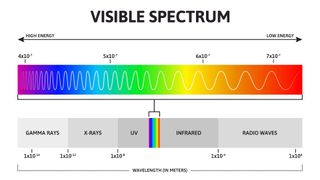
So, it's clear that nothing travels faster than light that we know of, but is there any situation where it might be possible? Einstein's theory of special relativity, and his subsequent theory of general relativity, is "built under the principle that the notions of space and time are relative," de Rham said. But what does this mean? "If someone [were] able to travel faster than light and carry information with them, their notion of time would be twisted as compared to ours," de Rham said. "There could be situations where the future could affect our past, and then the whole structure of reality would stop making sense."
This would indicate that it would probably not be desirable to make a human travel faster than the speed of light. But could it ever be possible? Will there ever be a time when we are capable of creating craft that could propel materials — and ultimately humans — through space at a pace that outstrips light speed? "Theorists have proposed various types of warp bubbles that could enable faster-than-light travel," Cassibry said.
But is de Rham convinced?
"We can imagine being able to communicate at the speed of light with systems outside our solar system ," de Rham said. "But sending actual physical humans at the speed of light is simply impossible, because we cannot accelerate ourselves to such speed.
"Even in a very idealistic situation where we imagine we could keep accelerating ourselves at a constant rate — ignoring how we could even reach a technology that could keep accelerating us continuously — we would never actually reach the speed of light," she added. "We could get close, but never quite reach it."
Related: How long is a galactic year?
This is a point confirmed by Cassibry. "Neglecting relativity, if you were to accelerate with a rate of 1G [Earth gravity], it would take you a year to reach the speed of light. However, you would never really reach that velocity because as you start to approach lightspeed, your mass energy increases, approaching infinite. "One of the few known possible 'cheat codes' for this limitation is to expand and contract spacetime, thereby pulling your destination closer to you. There seems to be no fundamental limit on the rate at which spacetime can expand or contract, meaning we might be able to get around this velocity limit someday."
— What would happen if the speed of light were much lower?
— What if the speed of sound were as fast as the speed of light?
— How does the rubber pencil illusion work?
Allain is similarly confident that going faster than light is far from likely, but, like Cassibry, noted that if humans want to explore distant planets, it may not actually be necessary to reach such speeds. "The only way we could understand going faster than light would be to use some type of wormhole in space," Allain said. "This wouldn't actually make us go faster than light, but instead give us a shortcut to some other location in space."
Cassibry, however, is unsure if wormholes will ever be a realistic option.
"Wormholes are theorized to be possible based on a special solution to Einstein's field equations," he said. "Basically, wormholes, if possible, would give you a shortcut from one destination to another. I have no idea if it's possible to construct one, or how we would even go about doing it." Originally published on Live Science.

Joe Phelan is a journalist based in London. His work has appeared in VICE, National Geographic, World Soccer and The Blizzard, and has been a guest on Times Radio. He is drawn to the weird, wonderful and under examined, as well as anything related to life in the Arctic Circle. He holds a bachelor's degree in journalism from the University of Chester.
James Webb telescope measures the starlight around the universe's biggest, oldest black holes for 1st time ever
Molecule responsible for robbing Venus of its water may finally have been identified
Scientists map the lost 'Atlantis' continent that lies off Australia
Most Popular
- 2 1,900-year-old Roman legionary fortress unearthed next to UK cathedral
- 3 China has launched a secret robot to the far side of the moon, new Chang'e 6 photos reveal
- 4 Hoard of 17th-century coins hidden during English Civil War unearthed during kitchen renovation
- 5 Epic NASA video takes you to the heart of a black hole — and destroys you in seconds
- 2 Siberia's 'gateway to the underworld' is growing a staggering amount each year
- 3 Hoard of 17th-century coins hidden during English Civil War unearthed during kitchen renovation
- 4 2,500-year-old Illyrian helmet found in burial mound likely caused 'awe in the enemy'
- 5 Record-shattering Tonga volcanic eruption wasn't triggered by what we thought, new study suggests
We have completed maintenance on Astronomy.com and action may be required on your account. Learn More

- Login/Register
- Solar System
- Exotic Objects
- Upcoming Events
- Deep-Sky Objects
- Observing Basics
- Telescopes and Equipment
- Astrophotography
- Space Exploration
- Human Spaceflight
- Robotic Spaceflight
- The Magazine
What is the speed of light? Here’s the history, discovery of the cosmic speed limit

On one hand, the speed of light is just a number: 299,792,458 meters per second. And on the other, it’s one of the most important constants that appears in nature and defines the relationship of causality itself.
As far as we can measure, it is a constant. It is the same speed for every observer in the entire universe. This constancy was first established in the late 1800’s with the experiments of Albert Michelson and Edward Morley at Case Western Reserve University . They attempted to measure changes in the speed of light as the Earth orbited around the Sun. They found no such variation, and no experiment ever since then has either.
Observations of the cosmic microwave background, the light released when the universe was 380,000 years old, show that the speed of light hasn’t measurably changed in over 13.8 billion years.
In fact, we now define the speed of light to be a constant, with a precise speed of 299,792,458 meters per second. While it remains a remote possibility in deeply theoretical physics that light may not be a constant, for all known purposes it is a constant, so it’s better to just define it and move on with life.
How was the speed of light first measured?
In 1676 the Danish astronomer Ole Christensen Romer made the first quantitative measurement of how fast light travels. He carefully observed the orbit of Io, the innermost moon of Jupiter. As the Earth circles the Sun in its own orbit, sometimes it approaches Jupiter and sometimes it recedes away from it. When the Earth is approaching Jupiter, the path that light has to travel from Io is shorter than when the Earth is receding away from Jupiter. By carefully measuring the changes to Io’s orbital period, Romer calculated a speed of light of around 220,000 kilometers per second.
Observations continued to improve until by the 19 th century astronomers and physicists had developed the sophistication to get very close to the modern value. In 1865, James Clerk Maxwell made a remarkable discovery. He was investigating the properties of electricity and magnetism, which for decades had remained mysterious in unconnected laboratory experiments around the world. Maxwell found that electricity and magnetism were really two sides of the same coin, both manifestations of a single electromagnetic force.
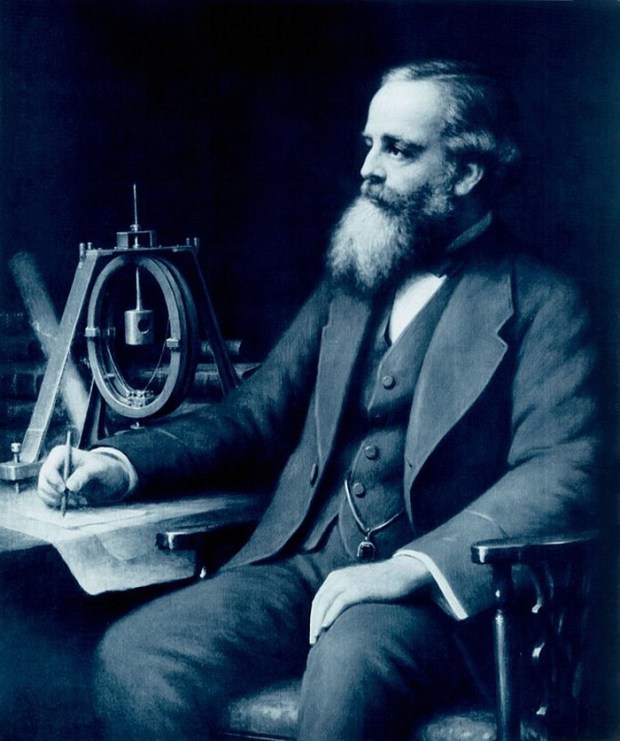
As Maxwell explored the consequences of his new theory, he found that changing magnetic fields can lead to changing electric fields, which then lead to a new round of changing magnetic fields. The fields leapfrog over each other and can even travel through empty space. When Maxwell went to calculate the speed of these electromagnetic waves, he was surprised to see the speed of light pop out – the first theoretical calculation of this important number.
What is the most precise measurement of the speed of light?
Because it is defined to be a constant, there’s no need to measure it further. The number we’ve defined is it, with no uncertainty, no error bars. It’s done. But the speed of light is just that – a speed. The number we choose to represent it depends on the units we use: kilometers versus miles, seconds versus hours, and so on. In fact, physicists commonly just set the speed of light to be 1 to make their calculations easier. So instead of trying to measure the speed light travels, physicists turn to more precisely measuring other units, like the length of the meter or the duration of the second. In other words, the defined value of the speed of light is used to establish the length of other units like the meter.
How does light slow down?
Yes, the speed of light is always a constant. But it slows down whenever it travels through a medium like air or water. How does this work? There are a few different ways to present an answer to this question, depending on whether you prefer a particle-like picture or a wave-like picture.
In a particle-like picture, light is made of tiny little bullets called photons. All those photons always travel at the speed of light, but as light passes through a medium those photons get all tangled up, bouncing around among all the molecules of the medium. This slows down the overall propagation of light, because it takes more time for the group of photons to make it through.
In a wave-like picture, light is made of electromagnetic waves. When these waves pass through a medium, they get all the charged particles in motion, which in turn generate new electromagnetic waves of their own. These interfere with the original light, forcing it to slow down as it passes through.
Either way, light always travels at the same speed, but matter can interfere with its travel, making it slow down.
Why is the speed of light important?
The speed of light is important because it’s about way more than, well, the speed of light. In the early 1900’s Einstein realized just how special this speed is. The old physics, dominated by the work of Isaac Newton, said that the universe had a fixed reference frame from which we could measure all motion. This is why Michelson and Morley went looking for changes in the speed, because it should change depending on our point of view. But their experiments showed that the speed was always constant, so what gives?
Einstein decided to take this experiment at face value. He assumed that the speed of light is a true, fundamental constant. No matter where you are, no matter how fast you’re moving, you’ll always see the same speed.
This is wild to think about. If you’re traveling at 99% the speed of light and turn on a flashlight, the beam will race ahead of you at…exactly the speed of light, no more, no less. If you’re coming from the opposite direction, you’ll still also measure the exact same speed.
This constancy forms the basis of Einstein’s special theory of relativity, which tells us that while all motion is relative – different observers won’t always agree on the length of measurements or the duration of events – some things are truly universal, like the speed of light.
Can you go faster than light speed?
Nope. Nothing can. Any particle with zero mass must travel at light speed. But anything with mass (which is most of the universe) cannot. The problem is relativity. The faster you go, the more energy you have. But we know from Einstein’s relativity that energy and mass are the same thing. So the more energy you have, the more mass you have, which makes it harder for you to go even faster. You can get as close as you want to the speed of light, but to actually crack that barrier takes an infinite amount of energy. So don’t even try.
How is the speed at which light travels related to causality?
If you think you can find a cheat to get around the limitations of light speed, then I need to tell you about its role in special relativity. You see, it’s not just about light. It just so happens that light travels at this special speed, and it was the first thing we discovered to travel at this speed. So it could have had another name. Indeed, a better name for this speed might be “the speed of time.”
Related: Is time travel possible? An astrophysicist explains
We live in a universe of causes and effects. All effects are preceded by a cause, and all causes lead to effects. The speed of light limits how quickly causes can lead to effects. Because it’s a maximum speed limit for any motion or interaction, in a given amount of time there’s a limit to what I can influence. If I want to tap you on the shoulder and you’re right next to me, I can do it right away. But if you’re on the other side of the planet, I have to travel there first. The motion of me traveling to you is limited by the speed of light, so that sets how quickly I can tap you on the shoulder – the speed light travels dictates how quickly a single cause can create an effect.
The ability to go faster than light would allow effects to happen before their causes. In essence, time travel into the past would be possible with faster-than-light travel. Since we view time as the unbroken chain of causes and effects going from the past to the future, breaking the speed of light would break causality, which would seriously undermine our sense of the forward motion of time.
Why does light travel at this speed?
No clue. It appears to us as a fundamental constant of nature. We have no theory of physics that explains its existence or why it has the value that it does. We hope that a future understanding of nature will provide this explanation, but right now all investigations are purely theoretical. For now, we just have to take it as a given.

2024 Full Moon calendar: Dates, times, types, and names

The northern lights: A history of aurora sightings

How to see the northern lights and what they looked like this weekend

What is an aurora, and why do they come in different shapes and colors?
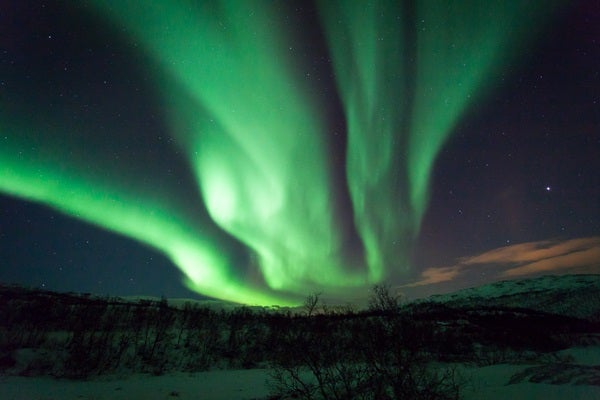
A solar storm the size of the Carrington Event could knock out the backbone of the Internet
Astronomers uncover ‘sleeping giant’ black hole gaia bh3, the largest ever found in the milky way.
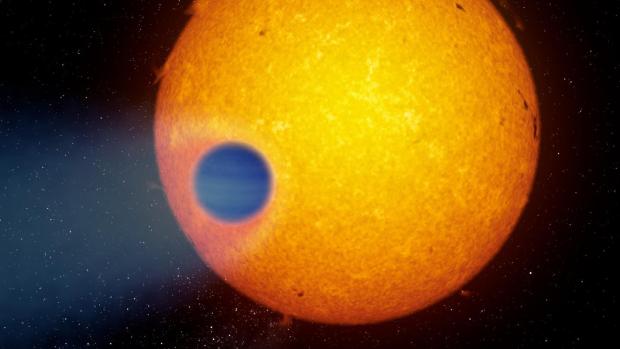
WASP-69b — and its weird tail — help us understand the cosmos
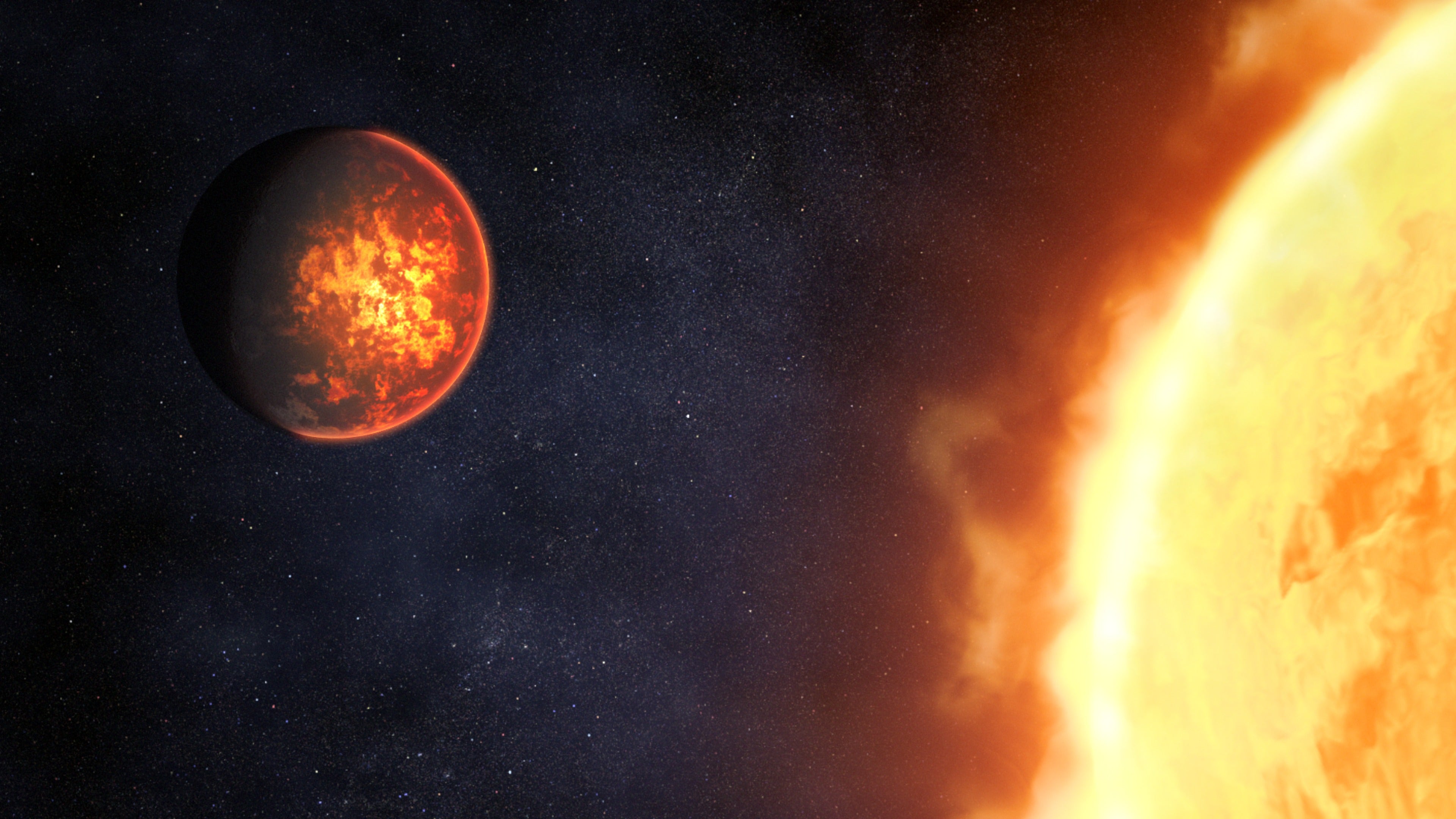
At last! JWST finds signs of a thick atmosphere around a rocky exoplanet

What happened to all the water on Venus?
Does Sound Travel Faster Than Light?
When you think about storms, the first things that come to mind are thunder and lightning, which almost always arrive together. As a result, it’s no wonder why so many people believe that sound and light are two parts of the same phenomenon.
Yet, they are actually quite different! In fact, while both have similarities, their origins and properties vary drastically, particularly their speeds. But that begs the question — which one is faster and what causes such a difference between them?

» QUICK NAVIGATION «
How Fast Does Sound Travel?
In specific conditions, sound is able to reach an impressive speed of almost 3,319 miles per hour . However, it’s important to understand that sound behaves differently depending on the surrounding environment.
For instance, in water, sound can reach the previously mentioned speed with ease . That’s because water is very dense, meaning that its molecules are very close to each other, allowing the fast transmission of vibrations.
Additionally, water is an incompressible medium . As a result, when it encounters a force such as sound, it immediately transfers its energy to nearby particles. This property blends perfectly with water’s density to create the perfect environment for sound propagation.
In contrast, air is not as dense as water . Not only that, but air rarely has a constant temperature, pressure, and humidity, which can all negatively affect the speed and direction of vibrations. Therefore, it’s no surprise that the speed of sound in air and similar mediums can barely reach 767 miles per hour .
And lastly, while sound can travel through all sorts of environments, it cannot exist in a vacuum. The reason behind it is that sound waves are mechanical and, therefore, need a medium to travel and transport their energy.
How Fast Does Light Travel?
When it comes to light, matters are almost completely different. For starters, light is an electromagnetic wave. Thus, it can pass through a vacuum at a speed of 186,000 miles per second or 669,600 miles per hour . Since it’s constant, that number is the generally accepted speed of light and is used in physics to determine the properties of objects in outer space.
However, while light is constant in the void of space, it has similar properties to sound in other environments . More specifically, it can slow down in transparent mediums like water, glass, and air. The ratio by which light reduces its speed is called the refractive index of the environment and is always greater than one.
As an example, water slows the speed of light 1.333 times while also slightly changing its direction. That’s why, if you stick a straw in a glass full of water, you’ll notice that the underwater part of the object will be misaligned when compared to the upper side.
Is There Anything Faster Than Light?
Generally speaking, light is the fastest thing known to man . Yet, some scientists believe that the expansion of the universe is considerably faster than light. That’s due to how space is not susceptible to the laws of physics. Experts have also observed that some galaxies are moving away from the Milky Way faster than light , while space itself is moving along with them.
What About Tachyons?
Tachyons are hypothetical particles that can travel faster than the speed of light . If they do exist, they could offer a way to transport information at unprecedented speeds. However, like many scientific concepts, the community is rather split regarding their existence.
One of the main arguments against tachyons is that their existence would contradict the laws of conservation of energy and momentum. That’s because tachyons would have to move faster than light while also being able to carry momentum and energy.
Some professionals think that tachyons might not actually travel faster than light . They believe that we perceive them faster than light because we can’t actually observe tachyons moving faster than light. This concept is called the Superluminal Paradox .
But all of these theories are still under debate by the scientific community. So, for now, at least on Earth, nothing can beat the speed of light , regardless of the surrounding environment.
Will Humans Be Able to Travel Faster Than Light?
According to special relativity , no object can travel faster than light, and if it can, then that object will move backward in time . That’s why experts theorize that traveling faster than light is the same as time traveling. However, as of today, this is still just a simple theory with minimal evidence supporting it. But since human understanding of the universe is still pretty scanty, scientists can never write off such a possibility.
Why Is Light Faster Than Sound?
At this point, you might wonder why there’s such a big speed difference between light and sound. After all, aren’t they both waves? In reality, it’s almost impossible to compare the two in a fair and accurate way.
Firstly, sound and light are indeed both waves . However, the former is a mechanical wave, while the latter is an electromagnetic wave. Therefore, sound requires a medium in order to travel, which also determines its speed. This requirement is in contrast to light, which can always travel through a vacuum at a constant speed.
Furthermore, the speed of electromagnetic waves, like light, is a fundamental constant of nature . It is a vital part of the fabric of the universe and is the speed with which cause and effect travel. This concept is extremely complex and reducing it to the same level as sound, which is easier to understand and quantify, doesn’t do it justice.
And finally, light has a dual nature, meaning that it can be a wave as well as a particle. As a result, while it usually tends to slow down in water and similar dense environments, it will rarely decrease close enough to the speed of sound.
Science can be a bit overwhelming, especially if you are just starting to learn about sound and light. However, what you need to remember is that light is the fastest waveform and can surpass the speed of sound in any environment. And while sound is also pretty fast, the surrounding medium is what determines its speed.
RELATED POSTS:
- Does Sound Travel Up Or Down?
- Do Sound Waves Require A Medium?
- How To Reduce Echo In A Room
- Does Wood Reflect Or Absorb Sound?
- By Soundproof Living
Leave a Comment Cancel Reply
Your email address will not be published. Required fields are marked *

COMMENTS
In Earth's atmosphere, the speed of sound averages at about 761-miles per hour (1,225-kilometres per hour). That may seem fast, yet when compared to the speed of light, it seems quite small. Light travels at a staggering 670-million miles per hour (1.07-billion kilometres per hour). That's around 880,000 times faster than the speed of sound.
Discover the physics behind the speed of light and sound, and how they affect our perception of the world around us.
Image credit: Bill Robertson, et al. For the first time, scientists have experimentally demonstrated that sound pulses can travel at velocities faster than the speed of light, c. William Robertson ...
Can sound waves travel faster than the speed of light? Yes, says Joel Mobley, a physicist at the University of Mississippi in the US. In simulations Mobley has shown that ultrasound pulses could move at "superluminal" speeds when they enter water that contains thousands of tiny plastic beads. Waves moving in a dispersive medium are described by ...
Sound breaks the light barrier. Nothing can travel faster than light… except for sound. This is the claim of some US physicists, who say they have designed an unusual waveguide to make sound move at "superluminal" speeds ( Appl. Phys. Lett. 90 014102). Sound often comprises numerous superimposed waves of various wavelengths.
Table 17.2.1 17.2. 1 makes it apparent that the speed of sound varies greatly in different media. The speed of sound in a medium is determined by a combination of the medium's rigidity (or compressibility in gases) and its density. The more rigid (or less compressible) the medium, the faster the speed of sound.
Photo: Sensing with sound: Light doesn't travel well through ocean water: over half the light falling on the sea surface is absorbed within the first meter of water; 100m down and only 1 percent of the surface light remains. ... So sound travels much faster in warm air near the ground than in colder air higher up, for example. And it travels ...
For instance, sound will travel 1.59 times faster in nickel than in bronze, due to the greater stiffness of nickel at about the same density. Similarly, sound travels about 1.41 times faster in light hydrogen gas than in heavy hydrogen gas, since deuterium has similar properties but twice the density. At the same time, "compression-type" sound ...
Both waves travel at different speeds in the different regions of Earth, but in general, P-waves travel faster than S-waves. S-waves cannot be supported by the liquid core, producing shadow regions. As sound waves move away from a speaker, or away from the epicenter of an earthquake, their power per unit area decreases.
The standard metric for the speed of light is that of light traveling in vacuum. This constant, known as c, is roughly 186,000 miles per second, or roughly one million times the speed of sound in ...
The speed of light is much faster than the speed of sound in air. If you want to compare, the speed of sound in air is ~ 343 m/s and the speed of light is 3x1010m/s. In other words, light travels 186 thousand miles in 1 second, while sound takes almost 5 seconds to travel 1 mile. (published on 02/14/2017)
Light, on the other hand, is not a pressure wave—it's a fundamental particle. One ray of light is typically called a photon, and it's an electromagnetic disturbance. Light doesn't need a medium to travel. The speed of sound through air is about 340 meters per second. It's faster through water and it's even faster through steel.
In non-humid air at 20 degrees Celsius, the speed of sound is about 343 meters per second or 767 miles per hour. We can also watch the speed of sound of a repeating simple harmonic wave. The speed of the wave can again be determined by the speed of the compressed regions as they travel through the medium.
The speed of sound at 20 degrees Celsius is about 343 meters per second, but the speed of sound at zero degrees Celsius is only about 331 meters per second. Remember, the only way to change the speed of sound is to change the properties of the medium it's travelling in and the speed of sound is typically faster through solids than it is through ...
Light travels much faster than sound. This is why the flash of lightening is seen long before the sound of thunder is heard, even though they are formed at the same instant. Speed of light 3×10 10 m/s (300,000 km/s) Speed of sound 330m/s. Light Light is given out from a luminous source eg the sun or a projector lamp. Light travels in straight ...
In everyday terms, sound travels about the length of three and a half foot ball fields every second- about 50% faster than a Boeing 747 (roughly 250 m/s). This may seem fast, but it's tiny compared to light, which travels roughly a million times faster than sound (roughly 300,000,000 m/s). The medium
According to Physics Web in 'Sound breaks the light barrier,' a professor of physics in Tennessee has designed an experiment which proves that sound can move faster than light. This looks like ...
So, according to de Rham, the only thing capable of traveling faster than the speed of light is, somewhat paradoxically, light itself, though only when not in the vacuum of space. Of note ...
The ability to go faster than light would allow effects to happen before their causes. In essence, time travel into the past would be possible with faster-than-light travel. Since we view time as ...
Faster-than-light ( superluminal or supercausal) travel and communication are the conjectural propagation of matter or information faster than the speed of light ( c ). The special theory of relativity implies that only particles with zero rest mass (i.e., photons) may travel at the speed of light, and that nothing may travel faster.
Cherenkov radiation glows because the core of the Advanced Test Reactor is submerged in water to keep it cool. In water, light travels at 75 percent the speed it would in the vacuum of outer space, but the electrons created by the reaction inside of the core travel through the water faster than the light does.
Firstly, sound and light are indeed both waves. However, the former is a mechanical wave, while the latter is an electromagnetic wave. Therefore, sound requires a medium in order to travel, which also determines its speed. This requirement is in contrast to light, which can always travel through a vacuum at a constant speed.
The exsit of medium will then reduce the travel of light, the water reduce stronger than air. Sound is produced by the vibration of matter, it travels by the matter interact with each other. So it depend on the medium, the density of water are larger than air, then the interaction between the water molecule are larger than air molecule.